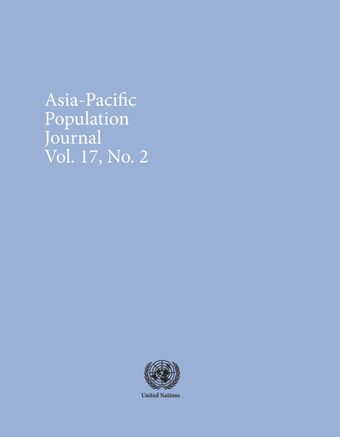-
Gender, family and fertility in Asia: An introduction
- Source: Asia-Pacific Population Journal, Volume 17, Issue 2, Jul 2002, p. 5 - 10
-
- 08 Jul 2002
- Previous Article
- Table of Contents
- Next Article
Abstract
Fertility decline has characterized the Asian population transition over the latter part of the last century. Beginning with the initiation of Japan’s transition in the 1930s, fertility declines in other Asian countries soon followed, with levels in Hong Kong, China; Singapore and Taiwan Province of China, beginning to fall by the 1960s. The latter part of the 1960s and the 1970s heralded the beginning of transitions in the major Chinese and the Republic of China cities, as well as the Chinese populations in South-East Asia (Hirschman and Guest, 1990; Westley, 2002). The total fertility rate for Asia as a whole, dropped from approximately 6 children per woman in the period 1950-1955 to approximately 2.7 children per woman by 1995-2000. Although there are regional variations in the total fertility rate, the current average level of fertility in Asia is slightly below the world average of 2.8 (Gubhaju and Durand, 2002). Currently, 14 countries and areas in Asia including Hong Kong, China; the Republic of Korea; Singapore; Taiwan Province of China, have fertility that is below replacement level (Gubhaju and Durand, 2002; McDonald, 2002; Tsay, 2002). At the same time, life expectancy has increased dramatically in Asia.





